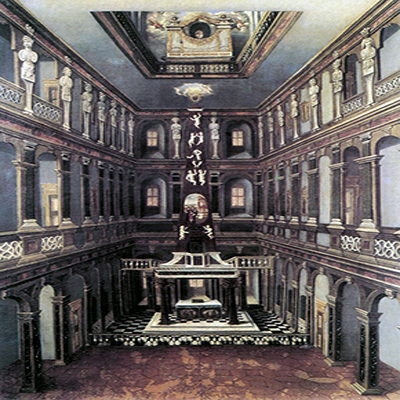Historische Weimarer Schlosskapelle »Himmelsburg« ab dem 10. April virtuell erlebbar
Im Rahmen der »Thüringer Bachwochen« können Kunst- und Kulturinteressierte vom 10. April bis 01. Mai 2022 ein exklusives Konzert von Johann Sebastian Bach virtuell erleben: Mithilfe von VR-Brillen und Kopfhören wird die Kantate 182 »Himmelskönig, sei Willkommen« in der historischen Schlosskirche Weimar an ihrem Ursprungsort wieder seh- und hörbar. Realisiert wurde das digitale Klang-Projekt unter Beteiligung der Professur Bauphysik an der Bauhaus-Universität Weimar.
Die als »Weg zur Himmelsburg« bezeichnete Kapelle des Weimarer Stadtschlosses ist bis heute ein Sehnsuchtsort für Musikinteressierte und Bachbegeisterte weltweit: In das Gebäudeensemble integriert, war die Kapelle zu Bachs Zeiten von außen eher unscheinbar. Im barock ausgestattetem Inneren wies sie jedoch eine Besonderheit auf: Eine Musikempore in circa 16 Meter Höhe, welche über eine Deckenöffnung mit dem Kirchenschiff verbunden war. Durch die architektonische Anordnung blieben Orgel und Musiker für einen Teil der Kirchenbesucherinnen und -Besucher verborgen, während die Musik den Raum von oben her erfüllte. Damit beeinflusste die außergewöhnliche Architektur auch den Raumklang, welcher zahlreiche Musikschaffende inspirierte. Darunter Johann Sebastian Bach, der ab 1714 mit seiner Ernennung zum Konzertmeister monatlich eine Kirchenkantate eigens für diesen Raum komponierte.
Bei einem Brand im Jahr 1774 wurde die Kapelle des Weimarer Stadtschlosses jedoch vollständig zerstört und nie wieder neu errichtet. Anhand weniger vorhandener Gemälde, historischer Bauzeichnungen sowie durch Vergleich mit Gebäuden gleicher Bauzeit konnte das visuelle und akustische Erscheinungsbild der historischen Schlosskirche rekonstruiert werden. In einem aufwendigen und durch die »Thüringer Bachwochen« koordiniertem Projekt wurde die »Himmelsburg« anschließend in eine virtuelle Umgebung überführt und für das Publikum erlebbar gemacht.
Weitere Informationen zu dem Projekt als auch zu folgenden Spielorten kann dem Programmheft der Thüringer Bachwochen entnommen werden.
https://www.thueringer-bachwochen.de/veranstaltungen/2022/v5-die-himmelsburg/

